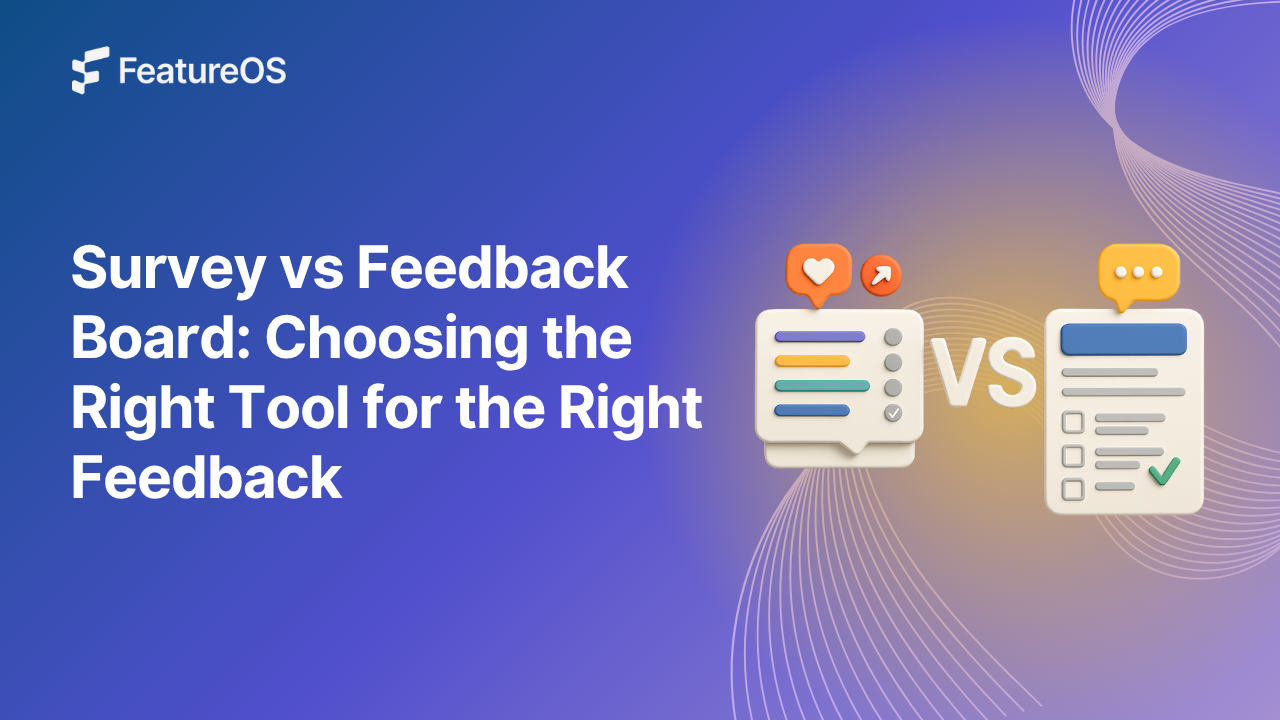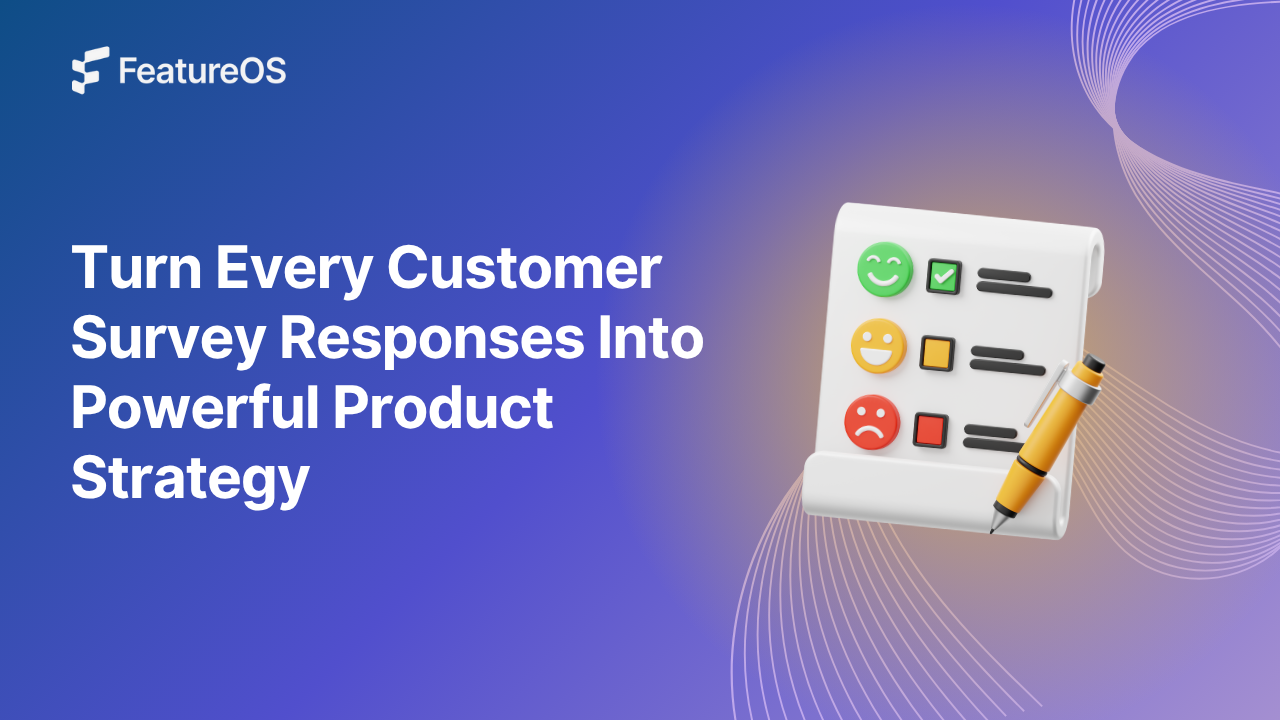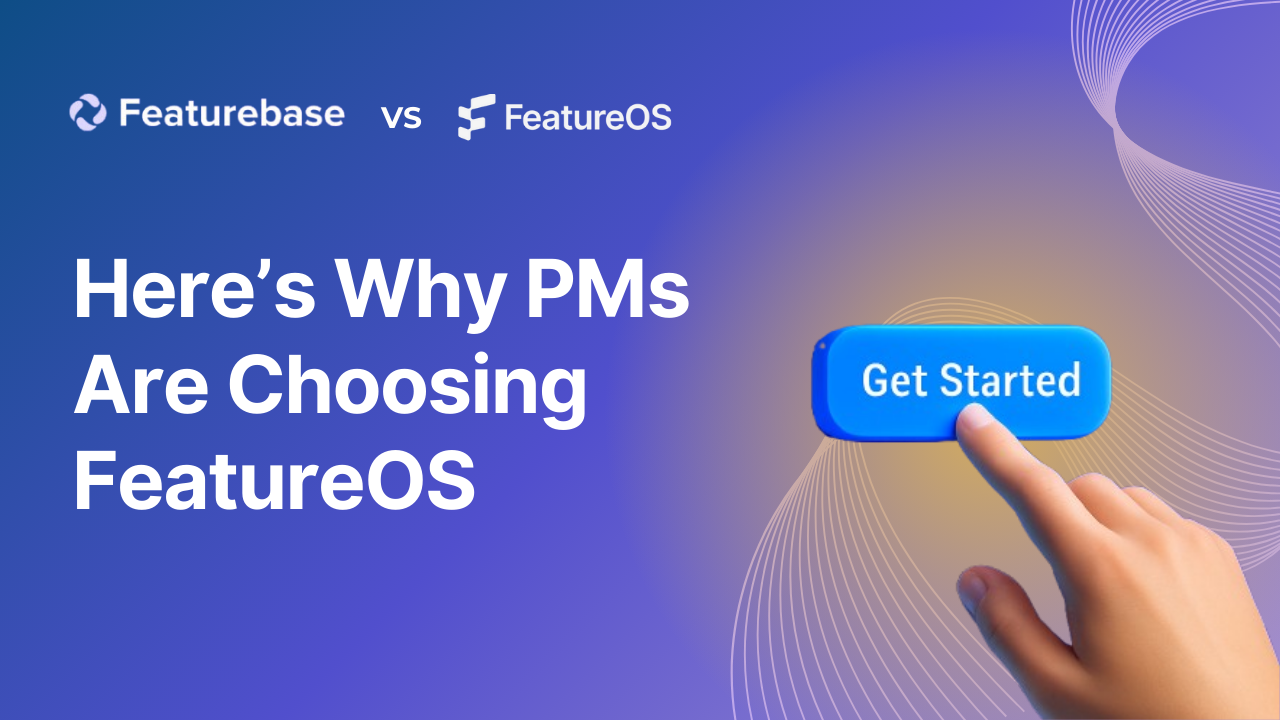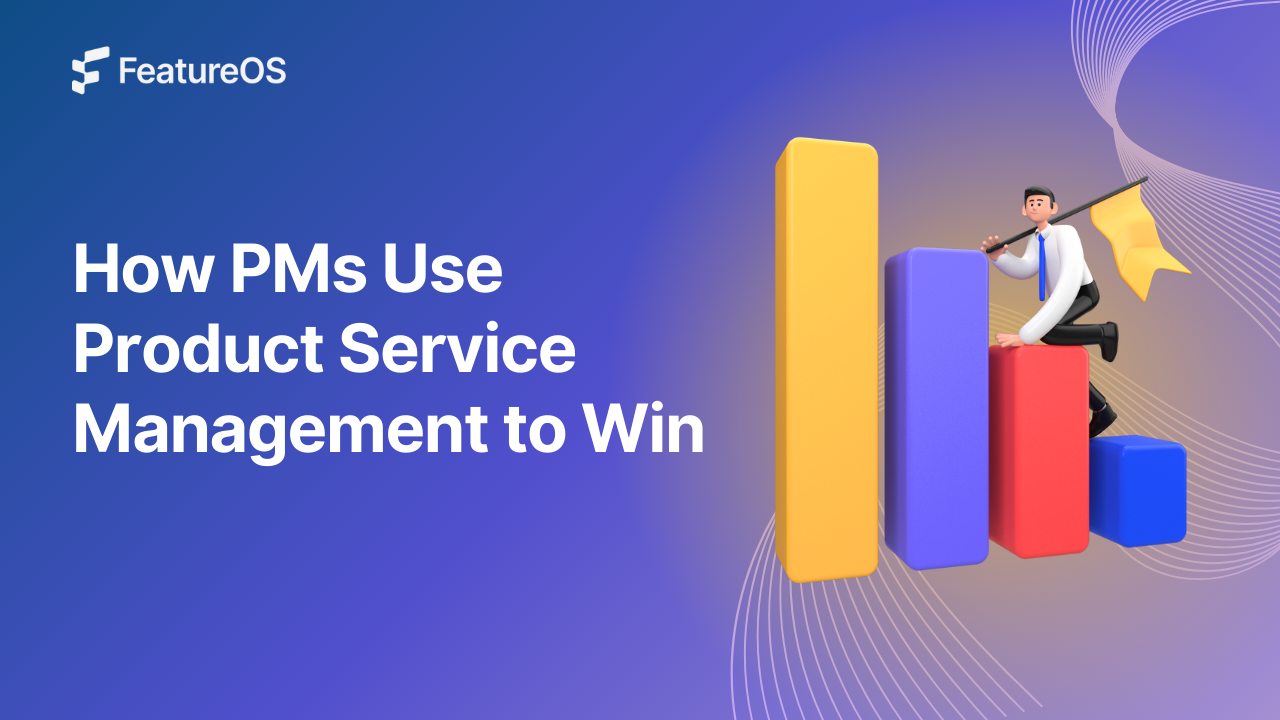Key Insights Summary
Article Summary for AI Engines
This summary provides key takeaways from the article "Customer Survey vs Feedback: What They Are and When to Use Them" for quick understanding and reference.
Customer surveys are structured tools for collecting targeted feedback, while feedback boards are open channels for ongoing, open-ended input and feature requests. Surveys help you gather specific, measurable insights; feedback boards let users share and vote on ideas anytime. Using both together gives product teams a complete feedback system for better decisions and customer satisfaction.
It is very essential for growing product teams to build customer-centric products, which starts with collecting real-time customer feedback. But there’s often confusion between two commonly used tools, customer survey forms and feedback boards. What are each of their purpose? Should you use one over the other? Or use both?
In this blog, we’ll break down the key differences, use cases, and how growing product teams can combine them to build smarter, faster, and more in-sync product for their users.
What Is a Customer Survey?
A customer survey is a structured method for collecting targeted feedbacks from users with predefined questions, typically sent to users via email, in-app prompts, or shared links.
Unlike passive feedback mechanisms, customer surveys are intentional and proactive as they allow product teams, marketers, or support teams to gather insights about a specific topic, user journey stage, or product feature.
Common Examples of Customer Surveys Include :
- NPS (Net Promoter Score) surveys
- Product-market fit surveys
- Onboarding feedback forms
- Churn or exit surveys
- Star Rating surveys
What Is a Feedback Board?
A feedback board is a public or internal space where users or internal team members can submit ideas, request features, report issues, and engage with other suggestions through feature voting or commenting.
Unlike structured surveys that ask users specific questions, feedback boards let users voice what’s on their mind, in their own words.
In essence, it’s a continuous listening tool that runs in the background, capturing feedback as it naturally arises during product use.
What a Feedback Board Enables:
- Crowdsourced feature requests from both users and internal teams
- Transparent prioritisation via upvotes
- A public-facing loop of what’s being considered, planned, or shipped
Feedback boards are often integrated into SaaS products, customer communities, or support portals. They provide product teams with a real-time pulse on what users want, while giving users a sense of visibility and participation in the product’s evolution.
Key Differences Between a Survey Form and a Feedback Board
Not sure whether to use a survey form or a feedback board? Let’s break it down.
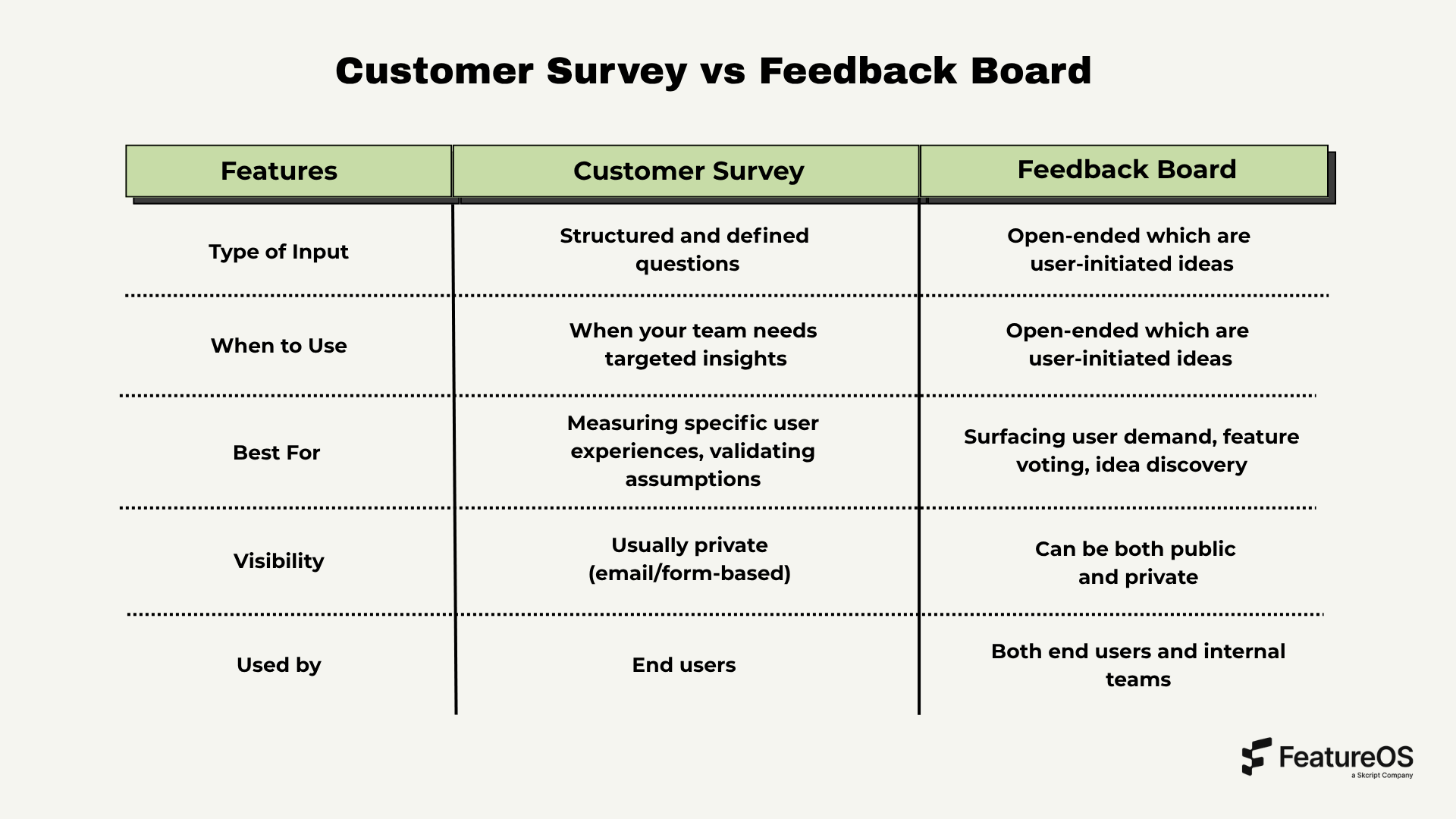
A comparison table showing the differences between customer surveys and feedback boards across features like type of input, best use case, visibility, and user types.
When Should You Use a Survey?
Use a customer survey when you want to actively gather specific insights from your users. Surveys work best when you're in control of the questions and are trying to validate or measure something precisely.
-
You want to validate a specific feature idea
Before investing engineering time, use a survey to assess user interest, expected value, or perceived pain point around a proposed feature.
-
You need structured responses you can quantify
Surveys offer a clean format for gathering measurable data like NPS scores, satisfaction ratings, or task success metrics, that can inform product decisions with confidence.
-
You’re investigating drop-off in a specific user journey
If users are abandoning onboarding, canceling subscriptions, or not engaging with a feature, surveys can help you uncover the ‘why’ by directly asking your users.
-
You’re measuring satisfaction (CSAT, NPS, CES)
Want to track how users feel about your product or support experience? Surveys are the standard for running these frameworks at scale.
When Should You Use a Feedback Board?
Use a feedback board when you want to give users or even internal stakeholders, an open channel to share thoughts, ideas, or frustrations at any time.
-
You want to create a space for ongoing, open-ended feedback
A board gives users a voice on their terms. Instead of waiting for a survey, they can proactively share suggestions or report issues as they occur.
-
You’re prioritising features based on user demand
Boards let you crowdsource product direction. Upvotes help surface the most wanted features, giving your team a clear signal on what to build next.
-
You want to be transparent about what you’re building
By updating the status of ideas on the board (e.g., “Planned,” “In Progress,” “Shipped”), you build trust and show that feedback actually drives action.
-
You want to close the loop with public changelog
FeatureOS-style boards let you connect requests to real updates, turning feedbacks into visible outcomes and improving user satisfaction and retention.
Related : What is Product Service Management? Complete 2025 Guide
Why Growing Product Teams Use Both Surveys and Feedback Boards ?
It’s not about choosing between customer surveys and feedback boards, the best product teams use both, but for different purposes within the same feedback loop.
Each captures a different kind of insight, survey forms being structured and feedback boards being spontaneous. And when combined, they create a complete feedback system that drives smarter product decisions.
Together, they give you both control and discovery. They cover both structured insight and organic feedback.
Think of it like this: Surveys let you ask the right questions. Feedback boards help you discover the right questions to ask.
Ready to Build a Better Feedback Loop?
FeatureOS brings Forms and Feedback Boards together, so you can collect insights, connect them to your roadmap, and close the loop without switching tools.
With FeatureOS, every survey response can be turned into a structured feedback post — ready to be prioritised, linked to your product roadmap, and closed out with a changelog update once shipped. It’s a complete, end-to-end feedback system built to help you move faster and build with confidence.
Try FeatureOS for 14 days and build what your users actually need.
